How can you take advantage of AI to meaningfully improve your productivity?
by Jon Lober | NOC Technology
Artificial Intelligence might be just the boost we need to jumpstart our personal and collective productivity.

Over the past several years, so-called productivity apps have become a normal part of work life for millions of American workers. Designed to keep us on task and collaborating better at a distance, these apps are especially important tools for large, hybrid, or virtual teams. However, as we add new apps to our phones and computers to improve our productivity at work, what are we actually talking about? What is our actual goal?
Exactly what is productivity?
Today we are going to take a brief look at how we measure productivity, why it is important, and what productivity apps can do to improve it in the workplace. Finally, we will take a quick look at a few of the innovative apps that you might be able to use to get more done.
First things first.
What is productivity?
The U.S. Bureau of Labor Statistics provides us with a practical, albeit a bit academic, answer to our question.
“Productivity is a measure of economic performance that compares the amount of goods and services produced (output) with the amount of inputs used to produce those goods and services.”
Within that definition, we see that productivity relies on inputs, of which there are two basic types: capital and labor. Capital productivity indicates how well a physical factor performs: money, tools, technology, plots of land, etc. On the other hand, labor productivity examines the output generated by a given individual (or group of individuals) over a period of time.
Since we are more interested in how individuals and teams perform, we will focus on labor productivity in this article. To that end, McKinsey & Company provides us with a concise alternative definition.
“Productivity measures the amount of value created for each hour that is worked in a society.”
Why has productivity slowed down in the United States over the past decade?
Since the tech boom of the 1990s, general productivity growth in advanced economies, including the United States, has been slowing down. This does not mean that our society is becoming less productive. It means that we are struggling to find new ways to become even more productive than we have been—a real life parallel to the law of diminishing returns.
We can only invent a technology one time. Once a technology is invented, refined, and democratized, other productivity gains beyond that new baseline will only be incremental compared to the “big jumps.”
Take the telephone as an example.
While the invention of the telephone dramatically improved productivity, once the average worker was able to reliably and consistently communicate at great distances, all other gains rooted in remote communication have resulted in relatively less growth in output. Even though cell phones and internet-based communication have dramatically improved our ability to connect around the globe, the resulting impact on efficiency is still much less than what was provoked by the rise of the telephone.
To think of it in simpler terms, the difference between a Zoom call and a phone call is much less than the difference between a telephone call and a multi-day journey via train, horse, and ship. The telephone (and telegraph before it) was truly revolutionary, facilitating enormous gains in efficiency.
Civilization’s last major jump forward was facilitated by the infiltration of semiconductors into everyday lives and workplaces. The semiconductor and internet boom of the 1990s facilitated the rise of personal computers, advanced robotics, cell phones, and other related technologies. Since that time, although the average worker’s productivity has continued to grow (thanks to the tools that were spawned and evolved from the tech boom), the rate has been measurably slower. Much slower.
Productivity growth over time: United States 1871-2016
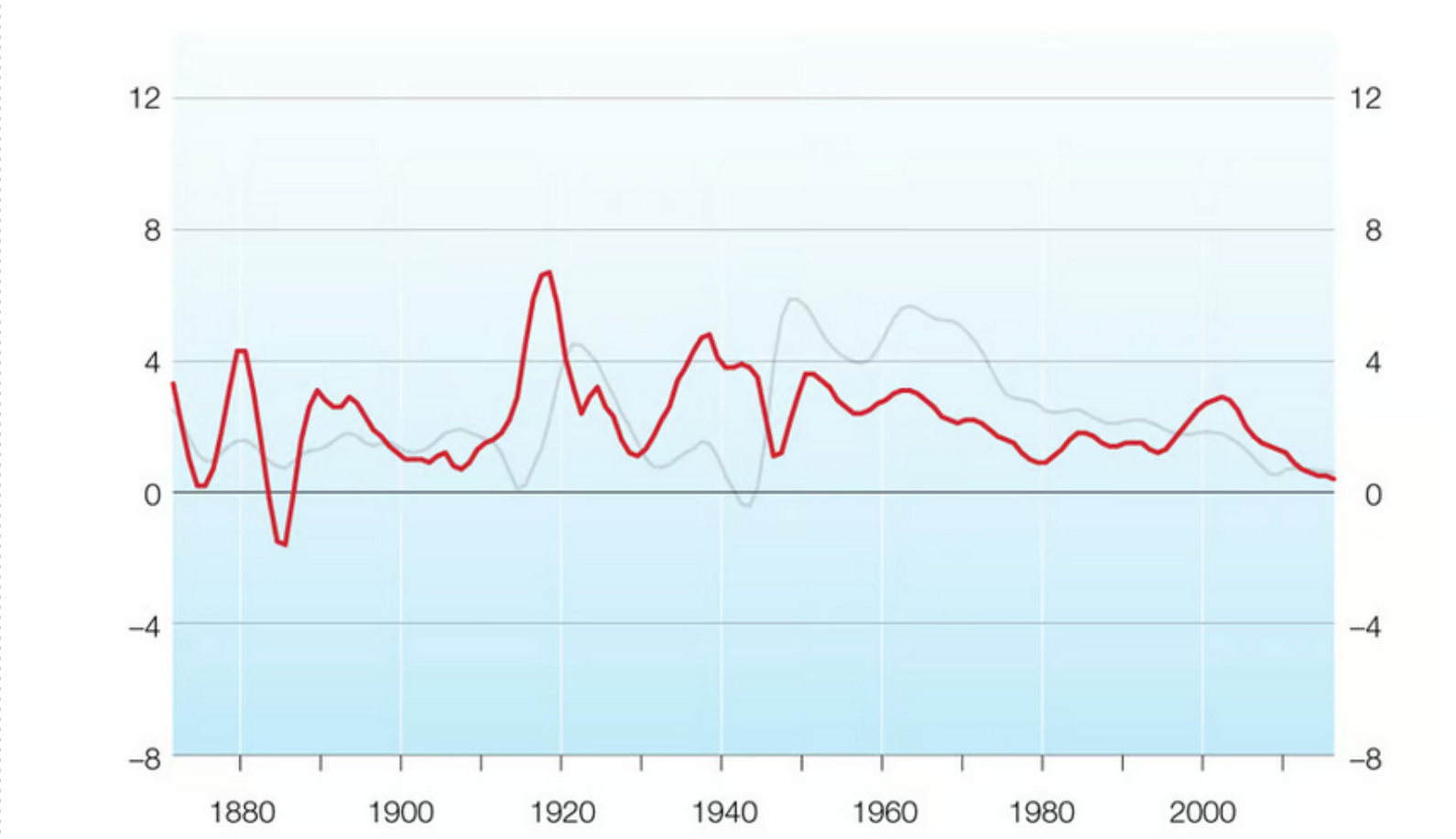
Graphic from McKinsey and Company: Solving the Productivity Puzzle
How can the average worker use technology to improve their productivity?
Incremental gains
While economists, politicians, and techno-optimists work out the kinks of economy-scale productivity issues, each individual must also discover how they can improve their own on-the-job productivity. Much of individual productivity can be attributed to the personal factors behind each unique human being. However, for the average office worker or office team, “productivity apps” offer an opportunity—in some cases a very significant opportunity.
Some of these apps are simple evolutions of existing technologies, which lead to small productivity gains. Productivity suites like Microsoft 365 and Google Workspace offer comprehensive platforms that enable employees to work more efficiently in a single environment without the time costs of switching from program to program.
Collaboration platforms like Asana and ClickUp facilitate common digital workspaces and project management.
Advanced communication apps like Teams, Slack, and Zoom have improved the output of remote work. As useful and powerful as all of these apps are, at the end of the day they are simply sharpened version of existing technologies.
Beyond these simple but significant apps, several productivity apps have begun to leverage the power of increasingly effective artificial intelligence (AI). These types of apps may soon facilitate meaningful leaps in the productive potential of the average worker.
A big jump?
Through the years, technology has frequently consolidated the potential labor of many individuals into the job of a single person. A single operator of a combine harvester replaces the labor of countless fieldhands that were needed to pick corn. An engineer with statistical software replaces the hand-computations of rooms full of individual human mathematicians. A single technician that maintains thousands of automated digital switches replaces legions of telephone switchboard operators.
Following the tech boom of the 90s, AI seems poised to be behind the next big productivity bump. The average worker will access the power of AI through productivity apps that can improve or automate their time-consuming, repetitive, or even creative tasks. As disruptive technologies like ChatGPT from OpenAI burst into the workplace, employers and employees alike are taking notice.
Within the first four months of its existence, nearly half of the businesses using ChatGPT had already replaced some of their workers with the chatbot. Many similar technologies, like those that we review below, have undoubtedly done the same within their respective sectors.
Like all technological advances, the advent of accessible AI is certainly provoking a combination of concern, delight, caution, and progress. However, it would seem that some version of AI is already here to stay and represents one of the greatest opportunities for workplace productivity growth.
AI in the Workplace
So, which productivity apps can the average worker leverage to access the greatest potential benefits of AI? Below we will take a look at a few of the nascent services that already offer employees the opportunity for significant improvements in office productivity through AI.
1. Grammarly. AI writing and editing.
Far more than Clippy ever dreamed of, this desktop-based AI app functions as a built-in professional writer and editor for every app that you use to compose the written word. Grammarly can check anything that you write, in any program, and recommend improvements. More impressive is its ability to craft its own polished communications with a few simple prompts from you. If you do not like the feel of what you have written, you can ask Grammarly to change your tone for you with the click of your mouse.
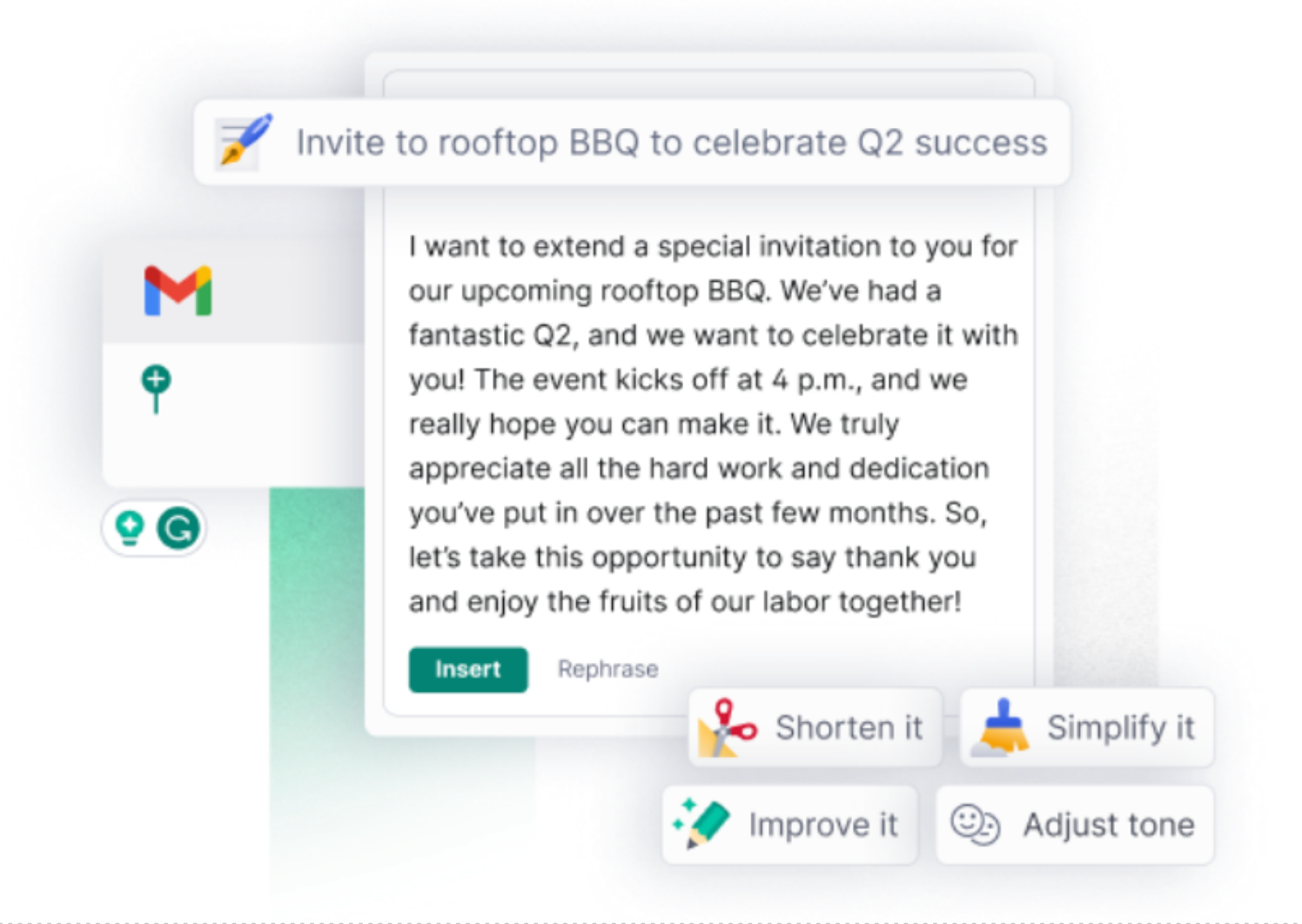
Screenshot from grammarly.com
2. Otter – Meeting transcription and note-taking.
This is the ultimate virtual assistant for virtual meetings. Otter can transcribe every spoken word, summarize key points, highlight action items, record slides and images, and keep track of all of the moving pieces of meetings on Zoom, Google Meet, Microsoft Teams and more. If you find yourself double-booked or held up, you can connect Otter to your calendar and instruct it to automatically join and capture the slides and transcription of any scheduled meeting.
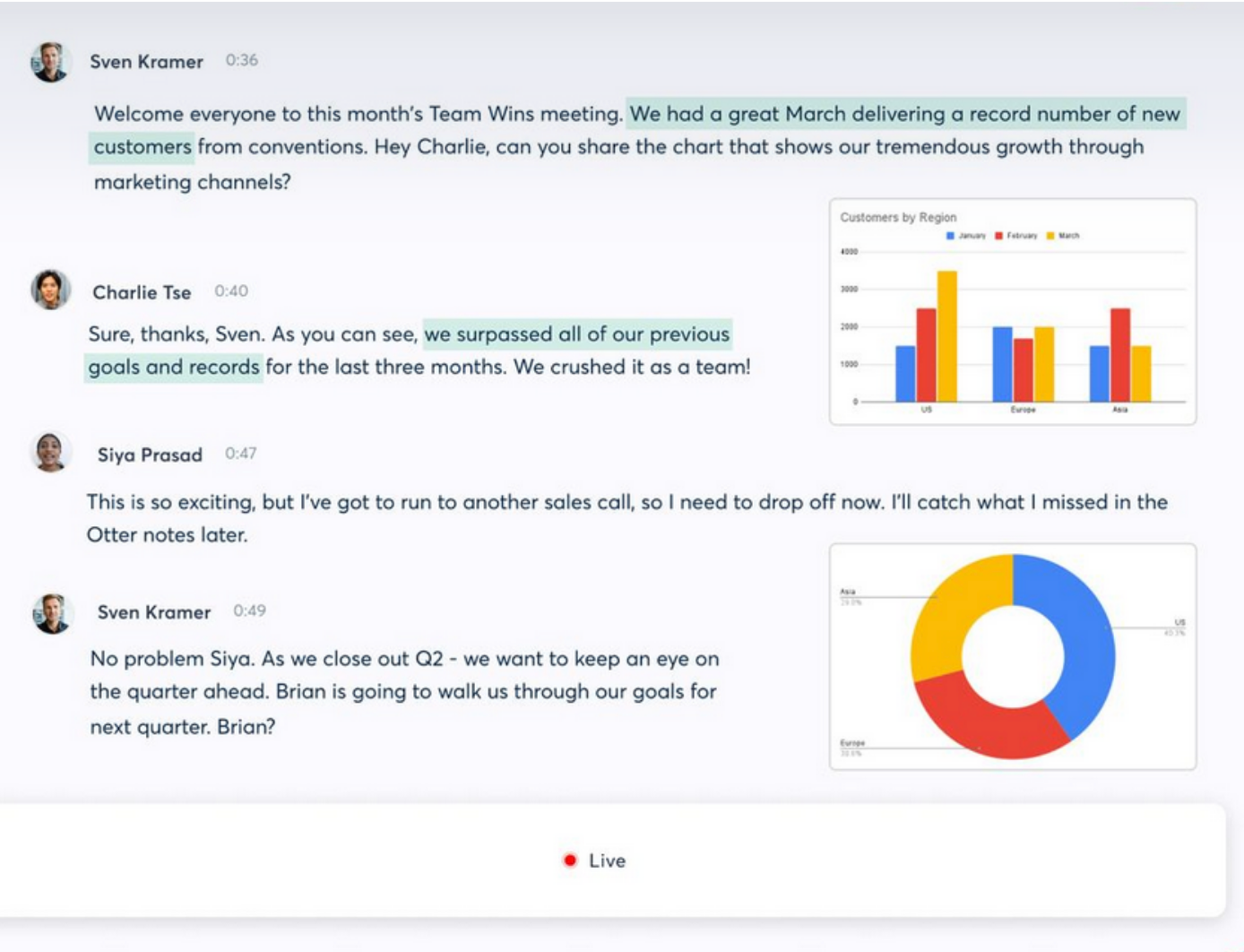
Screenshot from otter.ai/business
Beyond virtual meetings, Otter can transcribe nearly any spoken word – in person or from another video or audio source. You can attend a conference, set Otter to transcribe, and take pictures of slides that Otter will insert at the appropriate spot in the resulting document.
All of this transcription results in a searchable database of meetings, conferences, and conversations, so that you can quickly find the information you need, when you need it.
3. Rescue Time: Productivity and task management.
A productivity tool in every sense of the word,
Rescue Time uses AI to learn how you work and then nudge you towards a productive and healthy balance of life and work. If it senses you straying from focused work, it will ping you with a helpful reminder to get back on task. If you need it to completely shut out digital distractions for a while, it can do that too. With custom reports and billions of user hours in its database, it offers powerful custom tools and insights to help workers make the most of their hours.
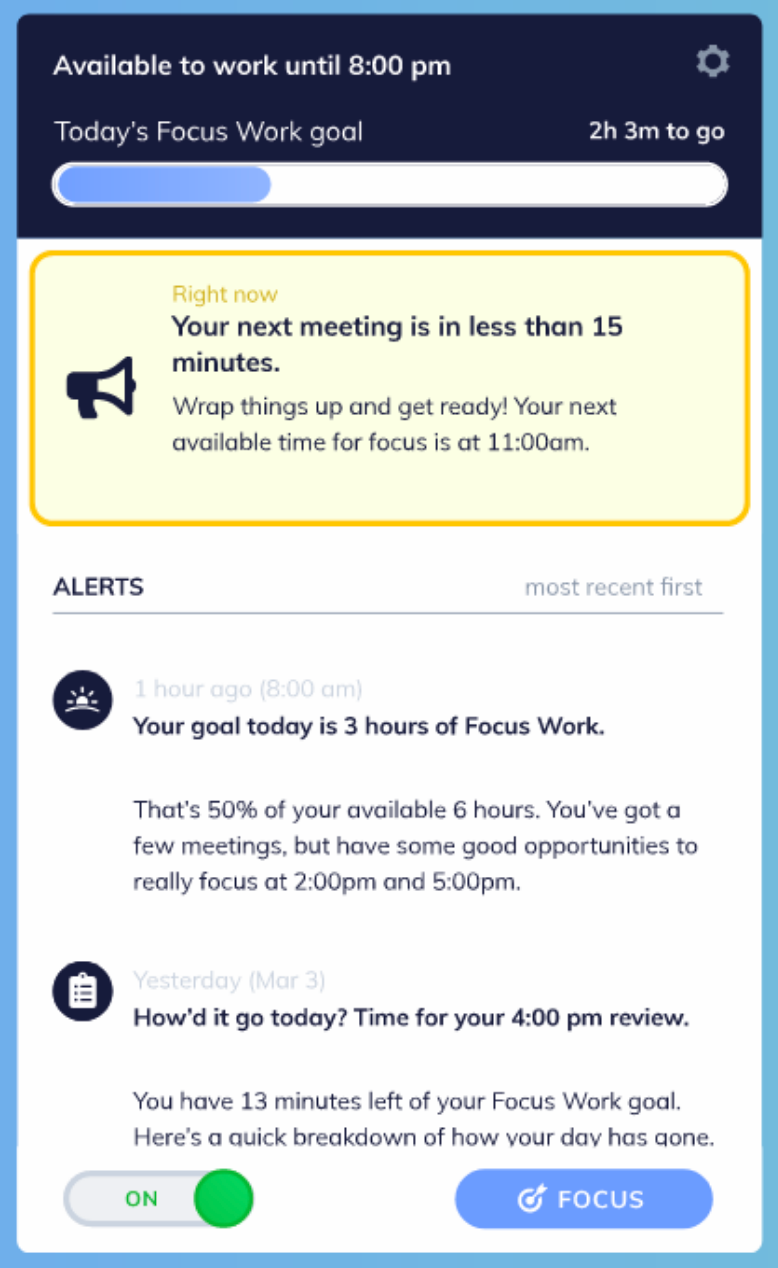
Screenshot from rescuetime.com
4. ChatGPT: Motor of the AI revolution
The release of ChatGPT by OpenAI in November of 2022 released a wave of interest and investment in AI software. The efficiency, ease, and conversational nature of this large language model (GPT-4) is making its way into a slew of new and coming features for many major tech players. Microsoft has invested heavily in OpenAI and will steadily infuse its products with ChatGPT technology over the coming months and years. Expect to see AI-powered versions of Outlook, Excel, and Word in the near future that will be capable of writing, replying, and analyzing data with simple, natural language prompts thanks to this tech.
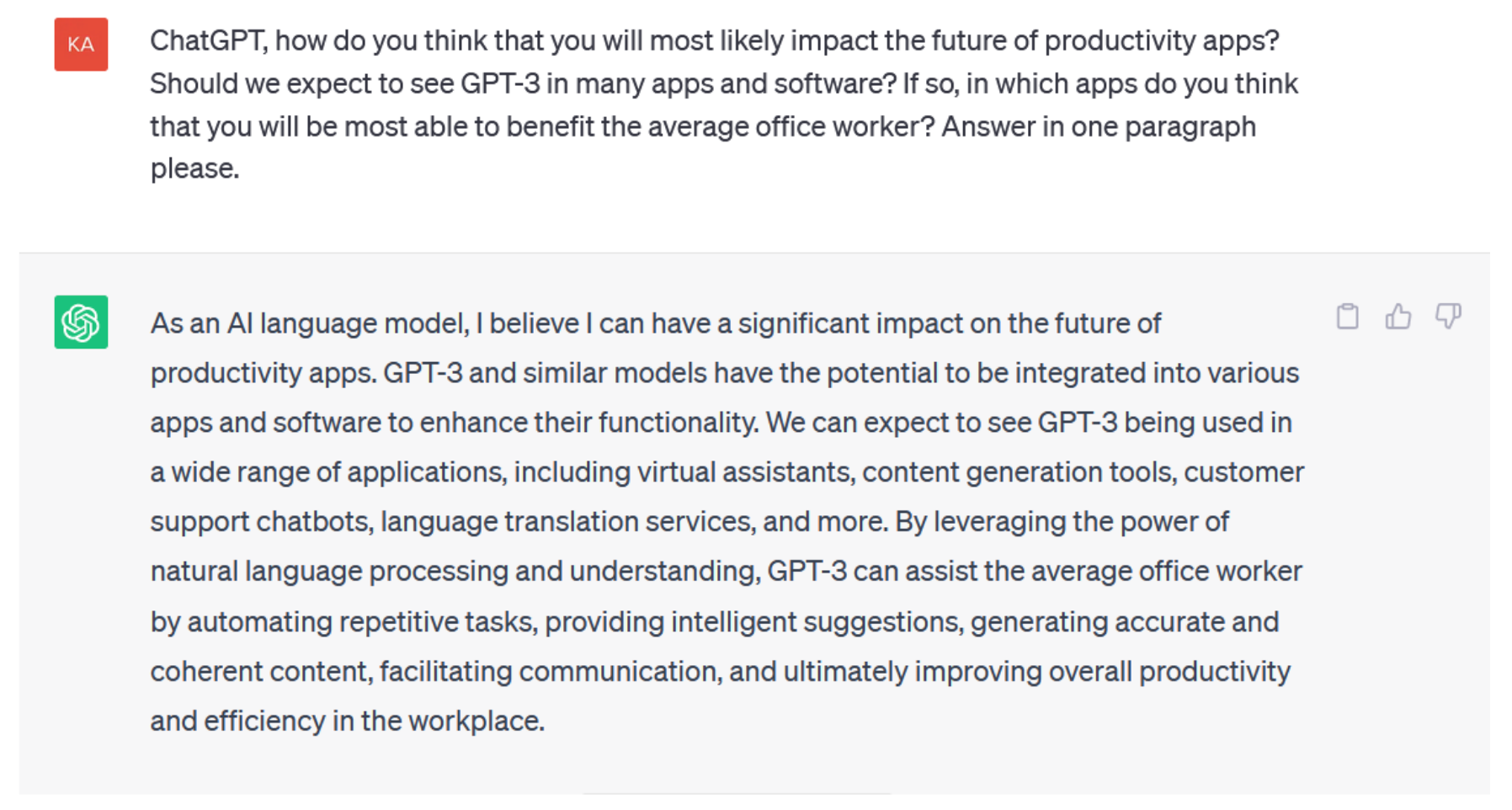
Screenshot from ChatGPT.
Beyond these AI tools, dozens more exist. Missive helps you organize and respond to emails. Jasper will write high quality content. Beautiful.ai will compose, organize, and animate purposeful and attractive slide decks for your next presentation.
How to make the jump.
Artificial Intelligence is here to stay—and it will be shaking things up. After germinating in universities, and tech companies for many years, it has now sprouted and is growing rapidly in workplaces across the country. Its presence will raise alarm for some and unreasonable expectations for many others.
However, those who realize the actual, concrete opportunities presented by AI can leverage its power to exponentially increase their productivity. Though far from a human brain, AI is now reaching the point that it can offload some of your most dreaded and draining tasks, allowing you to focus on your strengths and become more productive than ever.




